Cover Letter Format
Learn the best cover letter format to impress hiring managers. This guide helps you to structure your cover letter for maximum impact to ensure your CV is shortlisted.
1000+ Reviews on Trustpilot
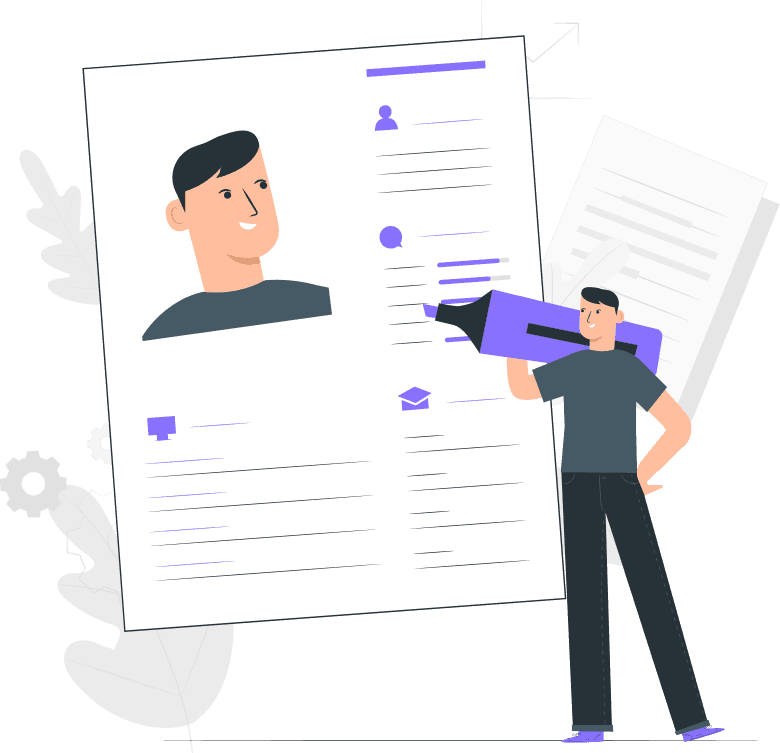
Cover Letter Format
Learn the best cover letter format to impress hiring managers. This guide helps you to structure your cover letter for maximum impact to ensure your CV is shortlisted.
1000+ Reviews on Trustpilot

Cover Letter Format
Learn the best cover letter format to impress hiring managers. This guide helps you to structure your cover letter for maximum impact to ensure your CV is shortlisted.
1000+ Reviews on Trustpilot


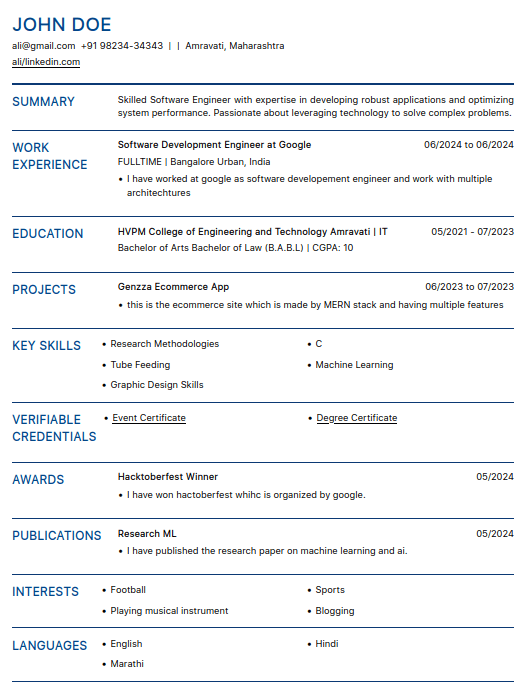
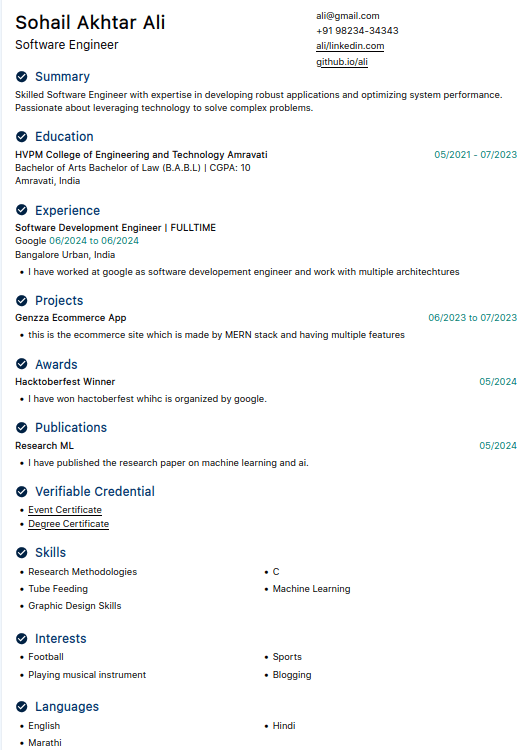
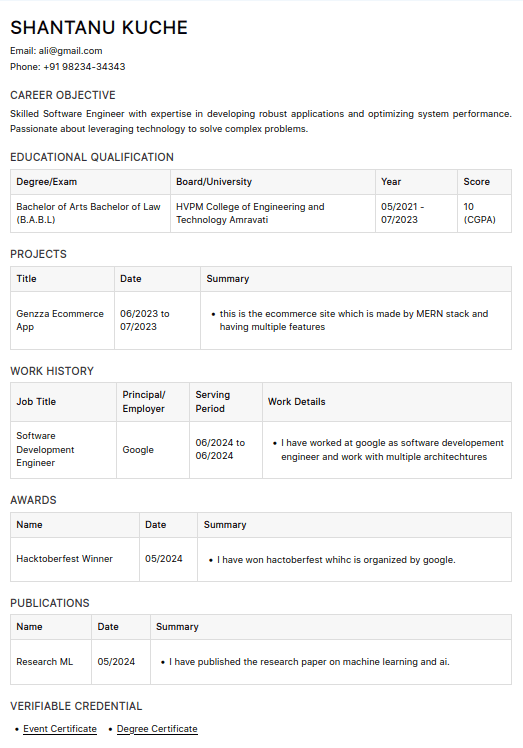
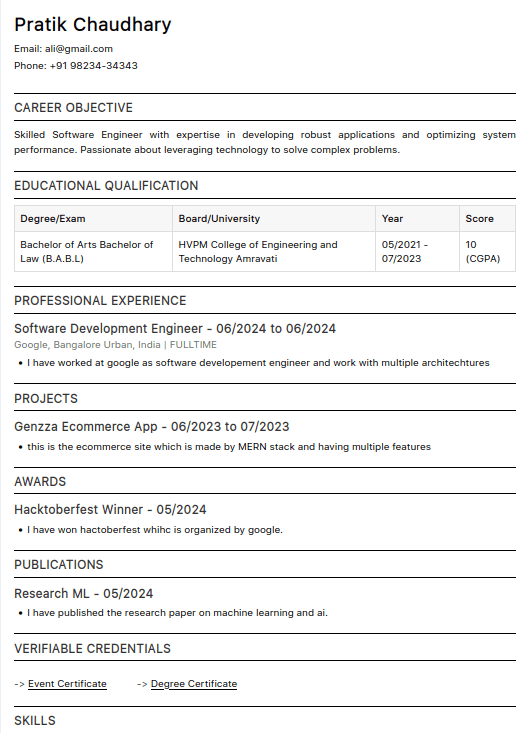
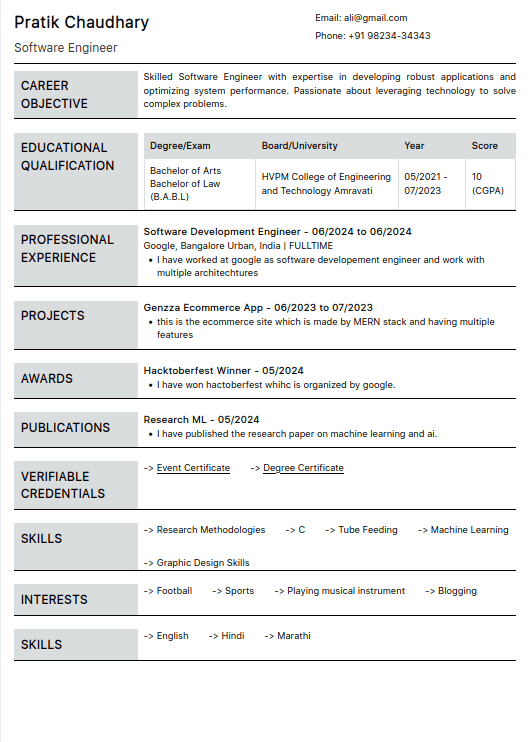












When it comes to job applications, your cover letter is just as important as your resume. It serves as your first introduction to potential employers, offering a glimpse into your personality, communication skills, and enthusiasm for the position.
However, even the most compelling content can be overlooked if your cover letter is not well-organized. In this article, we’ll explore the best cover letter format to ensure your application stands out and leaves a positive impression on hiring managers.
When it comes to job applications, your cover letter is just as important as your resume. It serves as your first introduction to potential employers, offering a glimpse into your personality, communication skills, and enthusiasm for the position.
However, even the most compelling content can be overlooked if your cover letter is not well-organized. In this article, we’ll explore the best cover letter format to ensure your application stands out and leaves a positive impression on hiring managers.
When it comes to job applications, your cover letter is just as important as your resume. It serves as your first introduction to potential employers, offering a glimpse into your personality, communication skills, and enthusiasm for the position.
However, even the most compelling content can be overlooked if your cover letter is not well-organized. In this article, we’ll explore the best cover letter format to ensure your application stands out and leaves a positive impression on hiring managers.
1. Importance of a Proper Cover Letter Format
A well-structured cover letter is crucial because it makes your application easy to read and understand. A clear and organized format helps highlight your qualifications and makes it easier for the hiring manager to follow your narrative. Moreover, a professional format demonstrates your attention to detail and commitment to presenting yourself in the best possible light.
1. Importance of a Proper Cover Letter Format
A well-structured cover letter is crucial because it makes your application easy to read and understand. A clear and organized format helps highlight your qualifications and makes it easier for the hiring manager to follow your narrative. Moreover, a professional format demonstrates your attention to detail and commitment to presenting yourself in the best possible light.
1. Importance of a Proper Cover Letter Format
A well-structured cover letter is crucial because it makes your application easy to read and understand. A clear and organized format helps highlight your qualifications and makes it easier for the hiring manager to follow your narrative. Moreover, a professional format demonstrates your attention to detail and commitment to presenting yourself in the best possible light.
2. Cover Letter Format Overview
A standard cover letter format typically includes the following sections:
Header
Salutation
Introduction
Body
Conclusion
Signature
Let’s break down each section in detail.
2. Cover Letter Format Overview
A standard cover letter format typically includes the following sections:
Header
Salutation
Introduction
Body
Conclusion
Signature
Let’s break down each section in detail.
2. Cover Letter Format Overview
A standard cover letter format typically includes the following sections:
Header
Salutation
Introduction
Body
Conclusion
Signature
Let’s break down each section in detail.
3. The Header
The header of your cover letter should include your contact information, the date, and the employer’s contact information. This section ensures that your cover letter is correctly addressed and provides essential contact details upfront.
Jane Doe
123 Main Street
City, State 12345
(555) 555-5555
jane.doe@email.com
August 23, 2024
John Smith
Hiring Manager
XYZ Corporation
456 Business Avenue
City, State 67890
Tips:
Ensure your email address is professional.
If submitting electronically, you can skip your home address and just include your city and state.
Include the full date (month, day, year) to maintain a formal tone.
3. The Header
The header of your cover letter should include your contact information, the date, and the employer’s contact information. This section ensures that your cover letter is correctly addressed and provides essential contact details upfront.
Jane Doe
123 Main Street
City, State 12345
(555) 555-5555
jane.doe@email.com
August 23, 2024
John Smith
Hiring Manager
XYZ Corporation
456 Business Avenue
City, State 67890
Tips:
Ensure your email address is professional.
If submitting electronically, you can skip your home address and just include your city and state.
Include the full date (month, day, year) to maintain a formal tone.
3. The Header
The header of your cover letter should include your contact information, the date, and the employer’s contact information. This section ensures that your cover letter is correctly addressed and provides essential contact details upfront.
Jane Doe
123 Main Street
City, State 12345
(555) 555-5555
jane.doe@email.com
August 23, 2024
John Smith
Hiring Manager
XYZ Corporation
456 Business Avenue
City, State 67890
Tips:
Ensure your email address is professional.
If submitting electronically, you can skip your home address and just include your city and state.
Include the full date (month, day, year) to maintain a formal tone.
4. Salutation
The salutation is your greeting to the hiring manager. Whenever possible, address your letter to a specific person. If you cannot find the name of the hiring manager, use a general but professional greeting.
Dear Mr. Smith,
Or, if the name is unknown:
Dear Hiring Manager,
Tips:
Avoid using outdated greetings like “To Whom It May Concern.”
Make an effort to find the hiring manager’s name through the company website or LinkedIn.
4. Salutation
The salutation is your greeting to the hiring manager. Whenever possible, address your letter to a specific person. If you cannot find the name of the hiring manager, use a general but professional greeting.
Dear Mr. Smith,
Or, if the name is unknown:
Dear Hiring Manager,
Tips:
Avoid using outdated greetings like “To Whom It May Concern.”
Make an effort to find the hiring manager’s name through the company website or LinkedIn.
4. Salutation
The salutation is your greeting to the hiring manager. Whenever possible, address your letter to a specific person. If you cannot find the name of the hiring manager, use a general but professional greeting.
Dear Mr. Smith,
Or, if the name is unknown:
Dear Hiring Manager,
Tips:
Avoid using outdated greetings like “To Whom It May Concern.”
Make an effort to find the hiring manager’s name through the company website or LinkedIn.
5. The Introduction
Your introduction should immediately capture the reader’s attention by stating the position you’re applying for and offering a brief overview of why you’re interested in the role. This section should be concise yet engaging, setting the stage for the rest of your cover letter.
Example:
I am writing to express my interest in the Senior Marketing Analyst position at XYZ Corporation, as advertised on your company’s website. With over six years of experience in data-driven marketing strategies, I am excited about the opportunity to contribute to your team’s success.
Tips:
Mention where you found the job listing.
Introduce yourself with enthusiasm and confidence.
5. The Introduction
Your introduction should immediately capture the reader’s attention by stating the position you’re applying for and offering a brief overview of why you’re interested in the role. This section should be concise yet engaging, setting the stage for the rest of your cover letter.
Example:
I am writing to express my interest in the Senior Marketing Analyst position at XYZ Corporation, as advertised on your company’s website. With over six years of experience in data-driven marketing strategies, I am excited about the opportunity to contribute to your team’s success.
Tips:
Mention where you found the job listing.
Introduce yourself with enthusiasm and confidence.
5. The Introduction
Your introduction should immediately capture the reader’s attention by stating the position you’re applying for and offering a brief overview of why you’re interested in the role. This section should be concise yet engaging, setting the stage for the rest of your cover letter.
Example:
I am writing to express my interest in the Senior Marketing Analyst position at XYZ Corporation, as advertised on your company’s website. With over six years of experience in data-driven marketing strategies, I am excited about the opportunity to contribute to your team’s success.
Tips:
Mention where you found the job listing.
Introduce yourself with enthusiasm and confidence.
6. The Body
The body of your cover letter is where you can dive into the specifics of your qualifications. This section is typically one to three paragraphs long and should focus on the following:
Relevant Experience: Highlight specific experiences that align with the job requirements. Use bullet points or short sentences to emphasize key achievements.
Skills and Competencies: Showcase the skills that make you a strong candidate. Tailor this section to the job description to show that you have the exact qualifications they’re looking for.
Company Knowledge: Demonstrate your understanding of the company’s goals, values, or recent projects. Explain why you’re drawn to the company and how you can contribute.
Example:
In my current role as a Marketing Analyst at ABC Company, I have led multiple successful campaigns, including a product launch that resulted in a 25% increase in sales within the first quarter. My expertise in market research and data analysis has allowed me to identify trends and optimize strategies that align with business objectives.
I am particularly impressed by XYZ Corporation’s innovative approach to marketing and commitment to sustainability. I am confident that my background in developing eco-friendly marketing campaigns can contribute to your company’s continued success.
Tips:
Focus on your most relevant experiences.
Quantify achievements when possible to provide tangible evidence of your success.
Keep the content concise and avoid overloading with information.
6. The Body
The body of your cover letter is where you can dive into the specifics of your qualifications. This section is typically one to three paragraphs long and should focus on the following:
Relevant Experience: Highlight specific experiences that align with the job requirements. Use bullet points or short sentences to emphasize key achievements.
Skills and Competencies: Showcase the skills that make you a strong candidate. Tailor this section to the job description to show that you have the exact qualifications they’re looking for.
Company Knowledge: Demonstrate your understanding of the company’s goals, values, or recent projects. Explain why you’re drawn to the company and how you can contribute.
Example:
In my current role as a Marketing Analyst at ABC Company, I have led multiple successful campaigns, including a product launch that resulted in a 25% increase in sales within the first quarter. My expertise in market research and data analysis has allowed me to identify trends and optimize strategies that align with business objectives.
I am particularly impressed by XYZ Corporation’s innovative approach to marketing and commitment to sustainability. I am confident that my background in developing eco-friendly marketing campaigns can contribute to your company’s continued success.
Tips:
Focus on your most relevant experiences.
Quantify achievements when possible to provide tangible evidence of your success.
Keep the content concise and avoid overloading with information.
6. The Body
The body of your cover letter is where you can dive into the specifics of your qualifications. This section is typically one to three paragraphs long and should focus on the following:
Relevant Experience: Highlight specific experiences that align with the job requirements. Use bullet points or short sentences to emphasize key achievements.
Skills and Competencies: Showcase the skills that make you a strong candidate. Tailor this section to the job description to show that you have the exact qualifications they’re looking for.
Company Knowledge: Demonstrate your understanding of the company’s goals, values, or recent projects. Explain why you’re drawn to the company and how you can contribute.
Example:
In my current role as a Marketing Analyst at ABC Company, I have led multiple successful campaigns, including a product launch that resulted in a 25% increase in sales within the first quarter. My expertise in market research and data analysis has allowed me to identify trends and optimize strategies that align with business objectives.
I am particularly impressed by XYZ Corporation’s innovative approach to marketing and commitment to sustainability. I am confident that my background in developing eco-friendly marketing campaigns can contribute to your company’s continued success.
Tips:
Focus on your most relevant experiences.
Quantify achievements when possible to provide tangible evidence of your success.
Keep the content concise and avoid overloading with information.
7. The Conclusion
Your conclusion should reiterate your interest in the position and invite the hiring manager to take the next step, such as scheduling an interview. Thank them for their time and consideration.
Example:
I would welcome the opportunity to discuss how my experience and skills align with the needs of your team. Thank you for considering my application. I look forward to the possibility of contributing to XYZ Corporation and am available for an interview at your earliest convenience.
7. The Conclusion
Your conclusion should reiterate your interest in the position and invite the hiring manager to take the next step, such as scheduling an interview. Thank them for their time and consideration.
Example:
I would welcome the opportunity to discuss how my experience and skills align with the needs of your team. Thank you for considering my application. I look forward to the possibility of contributing to XYZ Corporation and am available for an interview at your earliest convenience.
7. The Conclusion
Your conclusion should reiterate your interest in the position and invite the hiring manager to take the next step, such as scheduling an interview. Thank them for their time and consideration.
Example:
I would welcome the opportunity to discuss how my experience and skills align with the needs of your team. Thank you for considering my application. I look forward to the possibility of contributing to XYZ Corporation and am available for an interview at your earliest convenience.
8. Signature
Conclude your cover letter with a professional closing and your signature. If submitting a digital cover letter, your typed name will suffice, but leave space for a handwritten signature if sending a physical copy.
Example:
Sincerely,
Jane Doe
Tips:
Use a closing phrase like “Sincerely,” “Best regards,” or “Yours faithfully.”
Avoid informal closings like “Cheers” or “Best wishes.”
8. Signature
Conclude your cover letter with a professional closing and your signature. If submitting a digital cover letter, your typed name will suffice, but leave space for a handwritten signature if sending a physical copy.
Example:
Sincerely,
Jane Doe
Tips:
Use a closing phrase like “Sincerely,” “Best regards,” or “Yours faithfully.”
Avoid informal closings like “Cheers” or “Best wishes.”
8. Signature
Conclude your cover letter with a professional closing and your signature. If submitting a digital cover letter, your typed name will suffice, but leave space for a handwritten signature if sending a physical copy.
Example:
Sincerely,
Jane Doe
Tips:
Use a closing phrase like “Sincerely,” “Best regards,” or “Yours faithfully.”
Avoid informal closings like “Cheers” or “Best wishes.”
The format of your cover letter plays a vital role in how your application is received. By following the structured approach outlined in this article, you can ensure that your cover letter is not only professional but also compelling and tailored to the job you’re applying for.
Remember to customize your cover letter for each position, focusing on the qualifications that make you the best fit for the role. A well-formatted cover letter demonstrates your professionalism, attention to detail, and genuine interest in the position, making it a powerful tool in your job search arsenal
The format of your cover letter plays a vital role in how your application is received. By following the structured approach outlined in this article, you can ensure that your cover letter is not only professional but also compelling and tailored to the job you’re applying for.
Remember to customize your cover letter for each position, focusing on the qualifications that make you the best fit for the role. A well-formatted cover letter demonstrates your professionalism, attention to detail, and genuine interest in the position, making it a powerful tool in your job search arsenal
The format of your cover letter plays a vital role in how your application is received. By following the structured approach outlined in this article, you can ensure that your cover letter is not only professional but also compelling and tailored to the job you’re applying for.
Remember to customize your cover letter for each position, focusing on the qualifications that make you the best fit for the role. A well-formatted cover letter demonstrates your professionalism, attention to detail, and genuine interest in the position, making it a powerful tool in your job search arsenal
Cover Letter Builder FAQ
Cover Letter Builder FAQ
Cover Letter Builder FAQ
What is a Resume?
A resume is a formal document that provides an overview of your professional qualifications, including your work experience, education, skills, and achievements. It's typically used to apply for jobs, giving potential employers a snapshot of your background and suitability for a specific role. A well-crafted resume highlights your strengths and is often your first opportunity to make a strong impression.
What is a Resume?
A resume is a formal document that provides an overview of your professional qualifications, including your work experience, education, skills, and achievements. It's typically used to apply for jobs, giving potential employers a snapshot of your background and suitability for a specific role. A well-crafted resume highlights your strengths and is often your first opportunity to make a strong impression.
What is a Resume?
A resume is a formal document that provides an overview of your professional qualifications, including your work experience, education, skills, and achievements. It's typically used to apply for jobs, giving potential employers a snapshot of your background and suitability for a specific role. A well-crafted resume highlights your strengths and is often your first opportunity to make a strong impression.
How do i create my first resume?
A resume is a formal document that provides an overview of your professional qualifications, including your work experience, education, skills, and achievements. It's typically used to apply for jobs, giving potential employers a snapshot of your background and suitability for a specific role. A well-crafted resume highlights your strengths and is often your first opportunity to make a strong impression.
How do i create my first resume?
A resume is a formal document that provides an overview of your professional qualifications, including your work experience, education, skills, and achievements. It's typically used to apply for jobs, giving potential employers a snapshot of your background and suitability for a specific role. A well-crafted resume highlights your strengths and is often your first opportunity to make a strong impression.
How do i create my first resume?
A resume is a formal document that provides an overview of your professional qualifications, including your work experience, education, skills, and achievements. It's typically used to apply for jobs, giving potential employers a snapshot of your background and suitability for a specific role. A well-crafted resume highlights your strengths and is often your first opportunity to make a strong impression.
What should I include in my resume?
Your resume should include your contact information, a professional summary or objective, work experience, education, skills, and any relevant certifications or accomplishments. Tailoring your resume to the job you're applying for can increase your chances of standing out. 2. How long should my resume be?
What should I include in my resume?
Your resume should include your contact information, a professional summary or objective, work experience, education, skills, and any relevant certifications or accomplishments. Tailoring your resume to the job you're applying for can increase your chances of standing out. 2. How long should my resume be?
What should I include in my resume?
Your resume should include your contact information, a professional summary or objective, work experience, education, skills, and any relevant certifications or accomplishments. Tailoring your resume to the job you're applying for can increase your chances of standing out. 2. How long should my resume be?
Should I include a photo on my resume?
The answer is No. Including a photo on your resume is not recommended as it can distract the recruiter HR managers. Most of the companies use Applicant tracking system (ATS) to check the Resume. Graphics should possibly not be scanned by the ATS System. So, do not add any type of images in your resume.
Should I include a photo on my resume?
The answer is No. Including a photo on your resume is not recommended as it can distract the recruiter HR managers. Most of the companies use Applicant tracking system (ATS) to check the Resume. Graphics should possibly not be scanned by the ATS System. So, do not add any type of images in your resume.
Should I include a photo on my resume?
The answer is No. Including a photo on your resume is not recommended as it can distract the recruiter HR managers. Most of the companies use Applicant tracking system (ATS) to check the Resume. Graphics should possibly not be scanned by the ATS System. So, do not add any type of images in your resume.
What's the difference between a resume and a CV?
A resume is a informational document, typically one to two pages, that highlights your relevant work experience, skills, and education. A CV (Curriculum Vitae) is more detailed, often used for academic, research, or international positions, and includes a comprehensive overview of your professional history, publications, and other accomplishments.
What's the difference between a resume and a CV?
A resume is a informational document, typically one to two pages, that highlights your relevant work experience, skills, and education. A CV (Curriculum Vitae) is more detailed, often used for academic, research, or international positions, and includes a comprehensive overview of your professional history, publications, and other accomplishments.
What's the difference between a resume and a CV?
A resume is a informational document, typically one to two pages, that highlights your relevant work experience, skills, and education. A CV (Curriculum Vitae) is more detailed, often used for academic, research, or international positions, and includes a comprehensive overview of your professional history, publications, and other accomplishments.
How often should I update my resume?
You should update your resume regularly, especially after gaining new experience, skills, or certifications. It's a good practice to revisit and revise your resume every six months or whenever you're preparing to apply for a new job.
How often should I update my resume?
You should update your resume regularly, especially after gaining new experience, skills, or certifications. It's a good practice to revisit and revise your resume every six months or whenever you're preparing to apply for a new job.
How often should I update my resume?
You should update your resume regularly, especially after gaining new experience, skills, or certifications. It's a good practice to revisit and revise your resume every six months or whenever you're preparing to apply for a new job.
Build Your Resume
Truresume offers free Resume Templates to help you craft a professional resume quickly and easily.
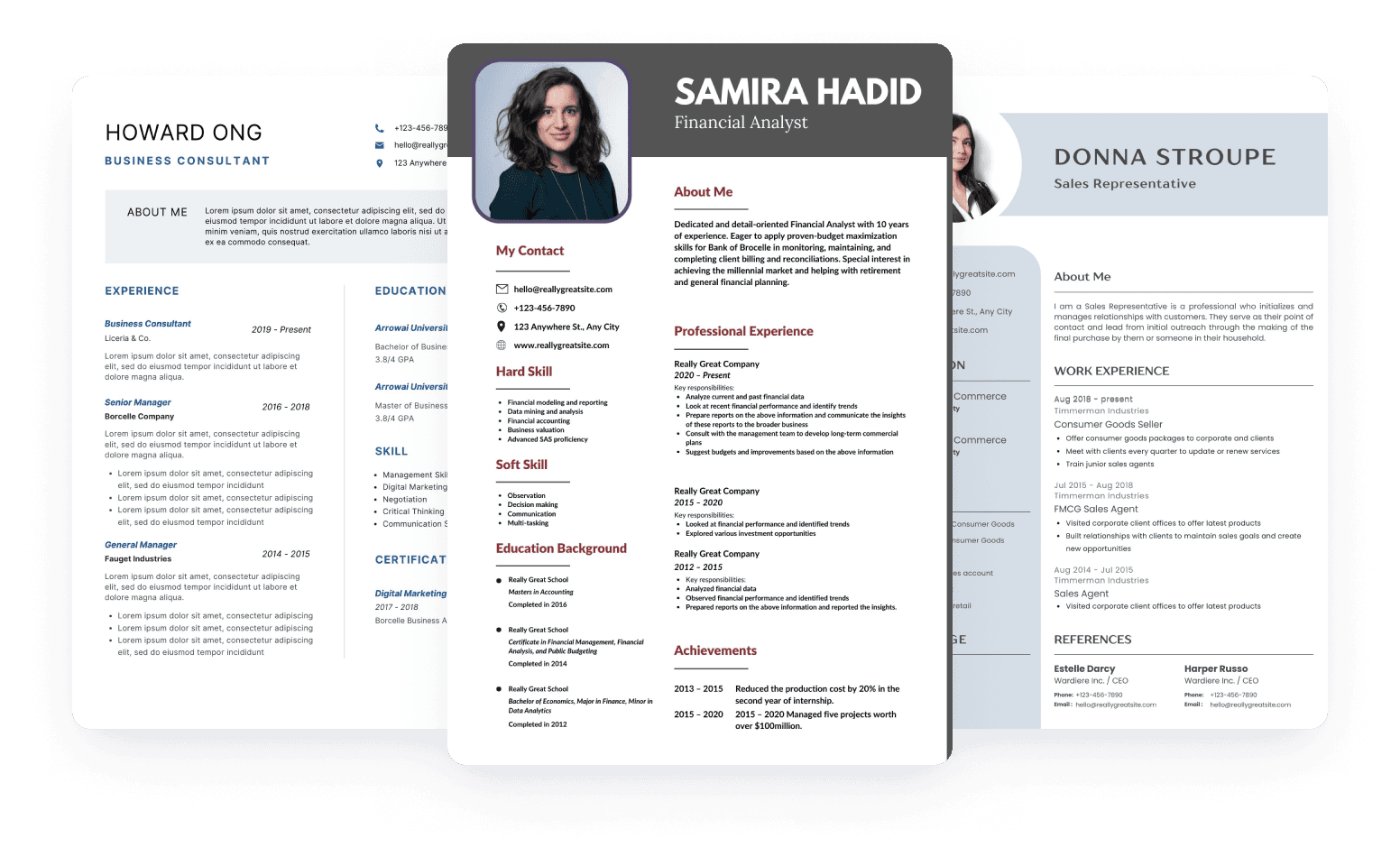
Build Your Resume
Truresume offers free Resume Templates to help you craft a professional resume quickly and easily.

Build Your Resume
Truresume offers free Resume Templates to help you craft a professional resume quickly and easily.

Our Featured Articles

resume
Best Resume Format for Freshers in 2025: Your Ultimate Guide to Getting Noticed
3 Jun 2025

ATS
Why TruResume ATS Friendly Resume Builder Tools Are Best for Resume Building
3 Jun 2025

Resume
Why ATS-Friendly Resumes Are Important to Pass Initial Screening
3 Jun 2025

Resume
What’s the Difference Between CV and Resume?
3 Jun 2025

Resume
How to Write a Resume for Freshers with No Experience
3 Jun 2025

Resume
What to Include or Not in Resume 2025 as a Fresher
3 Jun 2025
Our Featured Articles

resume
Best Resume Format for Freshers in 2025: Your Ultimate Guide to Getting Noticed
3 Jun 2025

ATS
Why TruResume ATS Friendly Resume Builder Tools Are Best for Resume Building
3 Jun 2025

Resume
Why ATS-Friendly Resumes Are Important to Pass Initial Screening
3 Jun 2025

Resume
What’s the Difference Between CV and Resume?
3 Jun 2025
Our Featured Articles

resume
Best Resume Format for Freshers in 2025: Your Ultimate Guide to Getting Noticed
3 Jun 2025

ATS
Why TruResume ATS Friendly Resume Builder Tools Are Best for Resume Building
3 Jun 2025

Resume
Why ATS-Friendly Resumes Are Important to Pass Initial Screening
3 Jun 2025

Resume
What’s the Difference Between CV and Resume?
3 Jun 2025